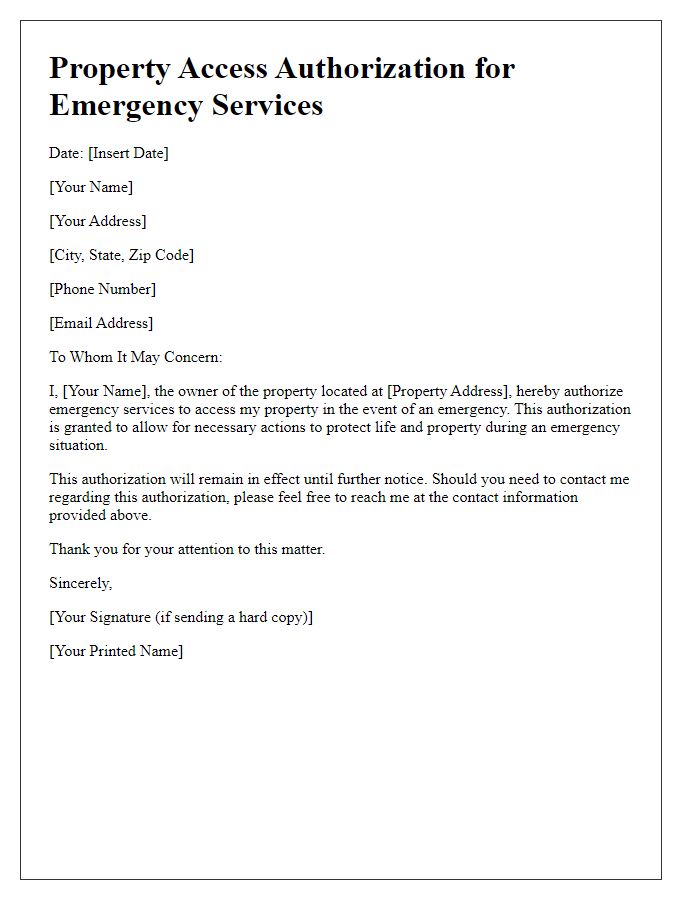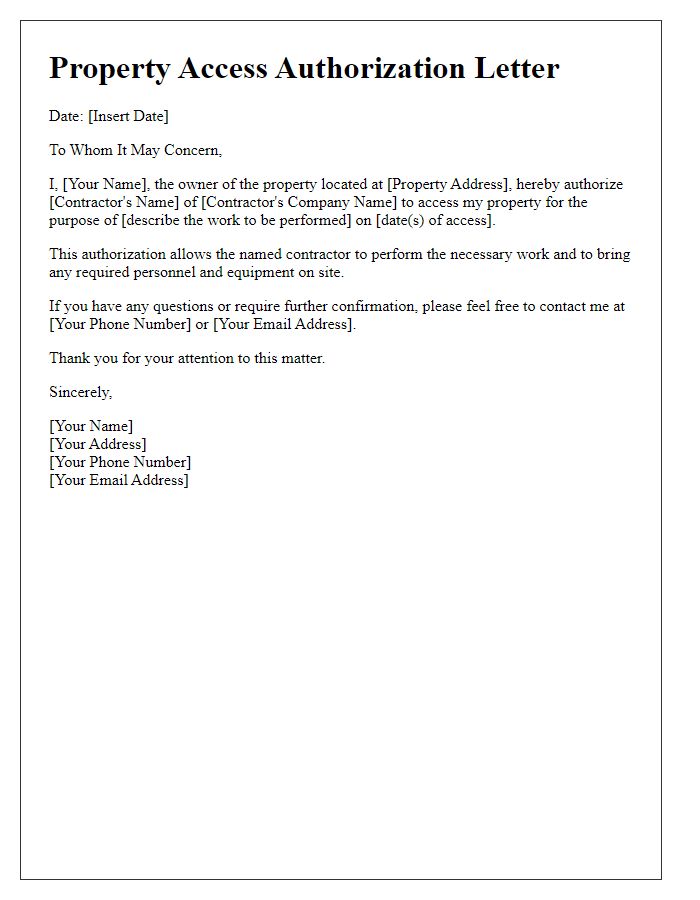Are you looking to streamline the process of granting property access to others? Whether it's for maintenance work, inspections, or real estate showings, having a clear authorization letter can make all the difference. In this article, we'll guide you through the essentials of crafting a concise and effective property access authorization letter that covers all bases. Let's dive in and simplify your property management experienceâread on to discover our expert tips!

Authorization details
Property access authorization is a formal document granting permission to individuals or entities to enter and access specific real estate locations. This authorization typically includes details such as the property address (for example, 123 Main Street, Anytown, USA), the duration of access (e.g., from January 1, 2024, to January 31, 2024), and the purpose of access (such as inspections, renovations, or maintenance). Additionally, it may specify the authorized individuals (like contractors or service personnel) and their responsibilities during the access period. Ensuring clear communication in this document helps establish legal rights and responsibilities, protecting the property owner's interests while allowing necessary access for designated individuals.
Property description
Property access authorization is essential for facilitating inspections, repairs, or showings. The property located at 123 Maple Street, Springfield, boasts a two-story Victorian architecture, encompassing approximately 2,400 square feet. The exterior features a wooden facade with intricate detailing, surrounded by a landscaped garden that includes various perennial plants and a small koi pond. Inside, the layout includes four bedrooms, three bathrooms, and an open-concept kitchen with granite countertops. The property is situated near Springfield Park, offering recreational opportunities and is within a 10-minute drive from downtown, providing convenient access to local shops and services. Access to this property is granted for specific dates, such as March 10 to March 15, 2024, for necessary maintenance and evaluation by authorized personnel.
Authorized individual's information
The property access authorization document includes details about the authorized individual, such as full name, date of birth (month/day/year), contact number, and email address. This documentation allows designated personnel to access private property, ensuring compliance with local regulations and enhancing security measures. Additionally, the form may require a government-issued identification number to verify identity and prevent unauthorized entries. It's essential to specify the duration of access rights, including start and end dates, to clarify the timeframe during which the authorized individual may conduct necessary activities on the property.
Purpose of access
Property access authorization is essential for various purposes, such as maintenance, inspections, and renovations. Maintenance teams often require access for routine checks on systems like HVAC and plumbing. Inspections may be needed for regulatory compliance or property appraisal. Renovation projects, including electrical upgrades or structural modifications, necessitate access to assess existing conditions and implement improvements. Clear communication regarding access times and specific areas of the property is critical to facilitate smooth operations and minimize disruptions for property occupants. Eigentumer (property owner) approval is often required to ensure compliance with housing regulations and community policies.
Signatures and contact details
Property access authorization requires clear communication of intent and details. The document must indicate the property address, owner's name, and specific dates for authorized access. Including identifiable information, such as phone numbers and email addresses, ensures easy communication between parties. Signatures of both the property owner and the authorized individual establish legal validity. Clearly stating the purpose of access, whether for repairs, inspections, or viewings, adds to the transparency of the arrangement. Noting any restrictions or special instructions can prevent misunderstandings during the access period.
Letter Template For Property Access Authorization Samples
Letter template of property access authorization for maintenance personnel.

Letter template of property access authorization for real estate agents.

Letter template of property access authorization for emergency services.











Comments